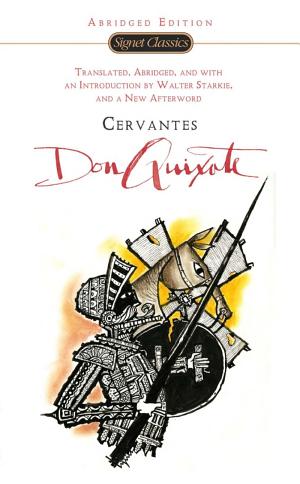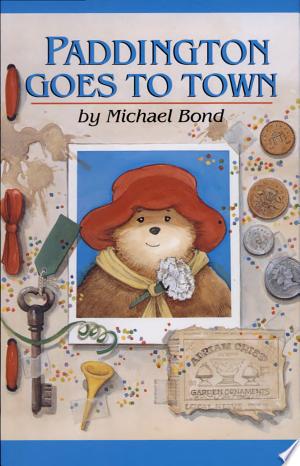Estimated read time: 5 min read
One Sentence Summary
"Don Quixote" is a satirical novel that follows the chivalrous and delusional adventures of an aging gentleman who becomes convinced he is a knight-errant, accompanied by his loyal squire Sancho Panza, as they seek to restore justice and revive the ideals of chivalry in a world that has moved on from such romantic notions.
Table of Contents
Introduction
"Don Quixote" is a timeless classic written by Miguel de Cervantes Saavedra and published in two parts, in 1605 and 1615. It's considered one of the greatest works of literature and has had a profound influence on the development of the modern novel. The novel tells the story of a man who becomes so obsessed with chivalric romances that he sets out on a series of adventures as a self-proclaimed knight-errant. Cervantes' work is a rich tapestry of humor, adventure, and social commentary, making it an essential read for anyone interested in exploring the human condition.
Brief Synopsis
Plot Overview and Setting
"Don Quixote" is set in the Spanish countryside during the 16th century. The novel follows the adventures of Alonso Quixano, an elderly man who becomes so engrossed in tales of chivalry and knighthood that he loses touch with reality. Renaming himself Don Quixote, he sets out on a series of misadventures with his loyal squire, Sancho Panza. The story is a blend of satire, comedy, and profound insight into the human psyche.
Main Characters
The novel features a rich cast of characters, but the main ones are:
| Character | Description |
|---|---|
| Don Quixote | An elderly gentleman who becomes obsessed with chivalric romances and sets out on a quest as a knight-errant. |
| Sancho Panza | Don Quixote's loyal squire, a simple farmer who provides comic relief and down-to-earth wisdom. |
| Dulcinea del Toboso | The woman Don Quixote idealizes as his lady love, though she is entirely fictional. |
Summary of Each Different Story Points Over Chapters
Part 1
Chapters 1-10
Alonso Quixano, a retired country gentleman, becomes obsessed with books of chivalry and decides to become a knight-errant named Don Quixote. He dons old armor, mounts his skinny horse, Rocinante, and sets out in search of adventure.
Chapters 11-20
Don Quixote mistakes windmills for giants and attacks them. He meets a neighboring farmer, Sancho Panza, and convinces him to become his squire with the promise of an island to rule.
Chapters 21-30
Don Quixote and Sancho encounter a group of merchants, and Don Quixote attempts to free a group of galley slaves. The duo then arrives at an inn, which Don Quixote believes to be a castle.
Part 2
Chapters 1-10
Don Quixote and Sancho meet a duke and duchess, who play tricks on them. Sancho is promised the governorship of an island but is later cruelly tricked.
Chapters 11-20
The pair encounters various characters, including a band of actors and a group of penitents. Don Quixote participates in a duel and is severely wounded.
Chapters 21-30
Don Quixote and Sancho encounter a lion, and Don Quixote is defeated in a combat with a Knight of the White Moon. He is forced to return home.
Main Events
- Don Quixote's first sally as a knight-errant, where he mistakes windmills for giants.
- Don Quixote's encounter with a group of galley slaves, which leads to a series of misadventures.
- The Duke and Duchess's cruel tricks on Don Quixote and Sancho Panza.
- Don Quixote's participation in a duel, resulting in a severe injury.
- Don Quixote's defeat by the Knight of the White Moon, leading to his return home.
Themes and Insights
Themes
- Reality vs. Illusion: The novel explores the fine line between reality and delusion, as Don Quixote's distorted perception of the world leads to both comedic and tragic situations.
- Power of Literature: Cervantes reflects on the influence of literature on individuals, as Don Quixote's actions are primarily driven by his obsession with chivalric romances.
- Social Satire: The novel satirizes the social and political structures of Cervantes' time, offering insightful commentary on the human condition and societal norms.
Insights
- The novel delves into the complexities of human psychology, portraying the impact of obsession and delusion on individual behavior.
- Cervantes provides a critical examination of the prevalent literary and cultural norms of his time, offering a nuanced perspective on the power of storytelling and its effects on readers.
Reader's Takeaway
"Don Quixote" offers readers a captivating journey through the whimsical and thought-provoking adventures of its eponymous protagonist. With a rich tapestry of themes, insightful commentary, and memorable characters, the novel invites readers to reflect on the enduring human pursuit of ideals and the consequences of unchecked obsession.
Conclusion
In conclusion, "Don Quixote" stands as a literary masterpiece that continues to captivate readers with its blend of humor, adventure, and profound social commentary. Cervantes' enduring work remains a timeless exploration of the human condition, offering valuable insights into the complexities of reality, the power of literature, and the enduring allure of chivalric ideals. Whether delving into the novel for the first time or revisiting it, readers are sure to be enthralled by the enduring legacy of "Don Quixote."
Don Quixote FAQ
What is the genre of Don Quixote?
Don Quixote is a novel that is often considered one of the greatest works of fiction in world literature. It is a satire of the chivalric romances that were popular in Cervantes' time.
Who is the author of Don Quixote?
Don Quixote was written by the Spanish author Miguel de Cervantes Saavedra, and it was first published in two parts in 1605 and 1615.
What is the plot of Don Quixote?
Don Quixote follows the adventures of a nobleman named Alonso Quixano who becomes so obsessed with chivalric romances that he decides to become a knight-errant, renaming himself Don Quixote. He sets out on a series of misadventures with his loyal squire, Sancho Panza.
Is Don Quixote a comedy or a tragedy?
Don Quixote is often considered a tragicomedy because it blends elements of both tragedy and comedy. It combines the humorous and absurd adventures of Don Quixote with moments of deeper reflection and philosophical insight.
What is the significance of Don Quixote in literature?
Don Quixote is considered one of the most influential works of literature and is often regarded as the first modern novel. It has had a profound impact on the development of the novel as a literary form and has inspired countless adaptations and reinterpretations.





